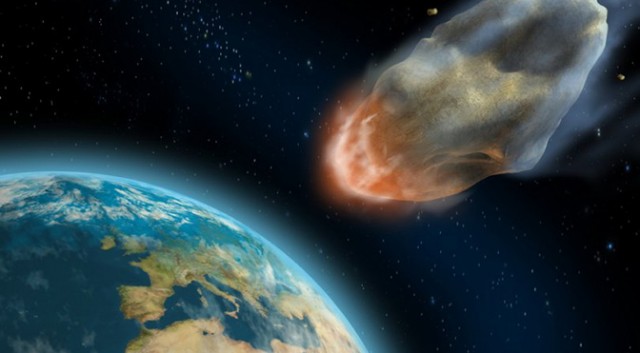[ad_1]

The age of dinosaurs lasted 165 million years, but that changed one fateful spring day 66 million years ago. Scientists have long known that a large object smacked into the region we now know as the Yucatan Peninsula, resulting in a mass extinction that ended the reign of dinosaurs on Earth. Following the discovery of a second impact crater off the coast of Africa, we might have to rethink the end of the Cretaceous period.
Scientists are calling the potential impact structure the Nadir crater. They say it was formed at roughly the same time as the famous 100-mile-wide Chicxulub crater in the Gulf of Mexico. The new crater is smaller at 5 miles in diameter, and it’s covered by several hundred feet of sediment. It was discovered by accident when Heriot-Watt University researcher Uisdean Nicholson used seismic data to study the tectonic plate division between South America and Africa. And there it was — something that looked very much like an impact crater.
The newly published study says the structure has all the common hallmarks of an impact crater, including a tall rim and a central uplift. The Chicxulub impactor was undoubtedly the primary threat to life on Earth 66 million years ago. That event rained fire on most of the globe and blotted out the sun for years, but a second large impact certainly didn’t help matters. The Nadir impactor was probably around 1,300 feet (400 meters) across, and it plunged through half a mile of water before hitting bedrock.

Nicholson tells CNN that such an impact could have caused strong earthquakes across Africa and a tsunami that swept across the Atlantic Ocean, which existed but was much narrower at the time. Living creatures that might have survived the Chicxulub event might have been wiped out by this second impact.
If confirmed, the Nadir crater could rewrite geologic history. All we can say right now is that there’s something underwater off the coast of Guinea that looks like an impact crater. Although Nicholson’s initial dating shows the Nadir event happened around the same time as Chicxulub, there is a margin of error of 1 million years. If Nadir and Chicxulub are related, they might have been part of a cloud of objects that showered Earth, or perhaps they were part of the same object that broke apart in the atmosphere before landing in two different places. To confirm this is the result of an asteroid strike, we would need to drill into the seafloor and analyze the mineral content. Sooner or later, someone is going to do that.
Now read:
[ad_2]
Source link















